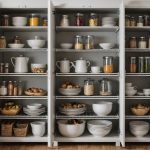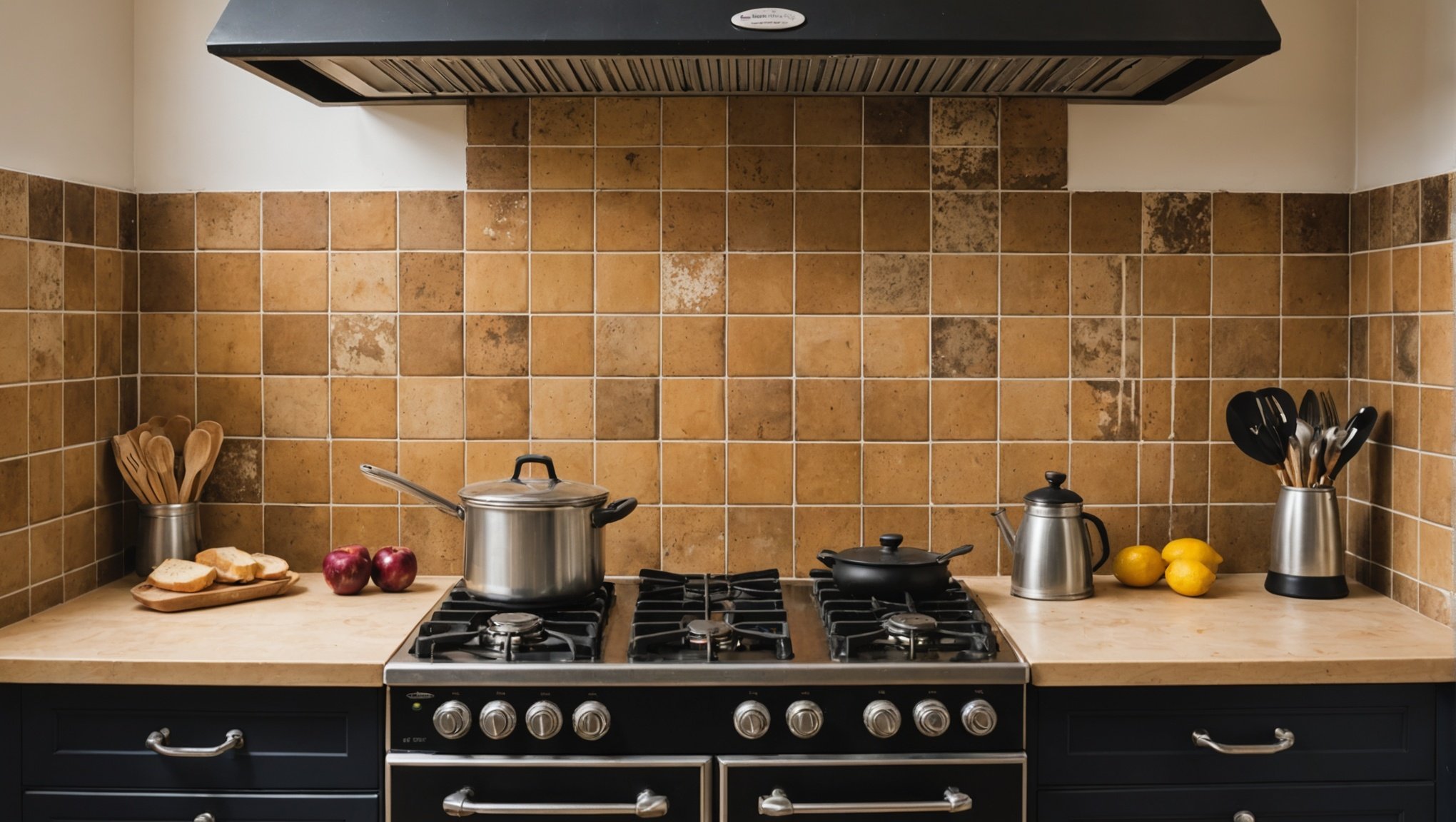Damp and mold in traditional UK kitchens are persistent problems that affect both health and comfort. These issues stem from a mix of outdated ventilation, moisture accumulation, and age-old building techniques. Understanding the root causes is essential for implementing effective solutions. This guide provides actionable strategies to tackle dampness and mold, ensuring you restore a safe and welcoming kitchen environment while preserving its traditional charm.
Understanding Damp and Mold in Traditional UK Kitchens
Traditional UK kitchens often grapple with damp and mold issues, primarily due to their unique structure and environmental factors. Identifying the root causes is essential for effective management.
Also to discover : Crafting the Perfect Kitchen Floor Plan: Seamlessly Integrating a Mudroom for Ultimate Functionality
Common Causes of Damp and Mold:
In kitchens, moisture can originate from various sources, including cooking, washing, and inadequate ventilation. These activities increase humidity, creating an ideal environment for mold.
Challenges in Traditional UK Kitchens:
Older structures may lack modern insulation and ventilation, exacerbating dampness. Traditional materials such as stone or wood can absorb moisture, leading to persistent damp issues. Additionally, these kitchens might have single-glazed windows or outdated plumbing, both of which can contribute to moisture retention.
Also read : Crafting a Kitchen for Effortless Cleaning and Hassle-Free Maintenance: Your Ultimate Guide
Environmental Factors:
The UK’s climate, characterized by frequent rain and high humidity, further complicates the situation. Poorly sealed windows and roofs can allow rainwater to seep in, while high humidity levels prevent moisture from evaporating effectively.
Addressing these issues involves improving ventilation, updating insulation, and regularly checking for leaks. Understanding these factors allows homeowners to take proactive steps to mitigate damp and mold, ensuring a healthier kitchen environment.
Prevention Techniques for Damp and Mold
Addressing mold prevention in traditional UK kitchens requires a multifaceted approach. Kitchen ventilation is paramount, as proper air circulation helps reduce humidity, a key factor in mold growth. Ensuring windows can open fully and installing extractor fans can significantly improve air movement.
Moisture Control Strategies
To effectively manage moisture, consider using dehumidifiers. These devices extract excess moisture from the air, maintaining a balanced humidity level. Position them strategically in the kitchen to target areas prone to dampness, such as near sinks or cooking appliances.
Damp-Proofing Recommendations
Implementing damp-proofing measures can further safeguard your kitchen. For instance, applying a damp-proof membrane under flooring can prevent moisture from seeping through. Additionally, using water-resistant paints on walls can act as a barrier against dampness.
- Damp-proof membranes: Install under floors to block moisture.
- Water-resistant paints: Apply on walls to prevent damp absorption.
Regularly inspecting for leaks and maintaining plumbing systems can also help in preventing damp. By combining these strategies, homeowners can effectively combat damp and mold, ensuring a healthier kitchen environment.
DIY Solutions for Damp and Mold Removal
Tackling damp and mold in your kitchen can be daunting, but DIY mold removal is achievable with the right approach. Begin by identifying affected areas. Look for discolouration or a musty smell, which often indicates mold presence. Once identified, it’s crucial to act promptly.
Step-by-Step Guide for Identifying and Treating Mold
- Inspect: Check common areas like under sinks or around windows.
- Ventilate: Open windows to improve air circulation before starting.
- Prepare: Gather necessary tools such as gloves, masks, and cleaning materials.
Effective Homemade Cleaning Solutions
For home remedies, mix equal parts of white vinegar and water in a spray bottle. Vinegar’s acidity makes it an effective mold killer. Spray the solution on the moldy area and let it sit for an hour. Then, scrub with a brush and rinse with warm water. Another option is a mixture of baking soda and water, which can be applied similarly.
Safety Precautions
When engaging in DIY mold removal, safety is paramount. Always wear gloves and a mask to avoid inhaling mold spores. Ensure the area is well-ventilated to prevent chemical fume accumulation. By following these guidelines, you can safely and effectively manage mold in your kitchen.
Professional Treatments for Severe Cases
When your kitchen’s damp and mold issues persist despite DIY efforts, it may be time to consider professional mold remediation. These experts offer comprehensive solutions, ensuring mold is not just removed but prevented from returning.
When to Seek Professional Help
If mold covers a large area or recurs frequently, it’s advisable to seek UK services specializing in mold remediation. Professionals possess the tools and knowledge to tackle severe infestations, which can be challenging to manage alone.
Overview of Professional Treatments
Professional treatments often begin with a thorough inspection to identify mold sources. Experts then use advanced techniques such as HEPA vacuuming and antimicrobial applications to eradicate mold. These methods are highly effective, ensuring a deep clean that DIY methods might not achieve. Additionally, experts can advise on long-term prevention strategies, such as improving ventilation and moisture control.
Choosing a Reputable Mold Remediation Service
Selecting the right service is crucial. Look for companies with certifications and positive customer reviews. A reputable service will offer a detailed action plan and transparent pricing. Ensure they use environmentally friendly products, safeguarding your health and the environment. By choosing wisely, you can trust that your mold issues will be professionally and effectively resolved.
Maintenance Tips for a Clean and Dry Kitchen
Maintaining a clean and dry kitchen is crucial to prevent damp and mold. Implementing effective kitchen maintenance and cleaning routines can significantly reduce these issues.
Recommended Cleaning Routines
Daily and weekly cleaning practices are essential for kitchen maintenance. Daily, wipe down surfaces with a mild detergent to remove moisture and food residues. Weekly, deep clean areas prone to moisture, such as under sinks and around windows, to prevent mold buildup.
Moisture Management Strategies
Managing moisture is key to maintaining low humidity levels. Use extractor fans during cooking and washing to expel excess humidity. Consider placing a dehumidifier in the kitchen to keep the air dry, especially in areas with persistent dampness.
Importance of Regular Inspections
Regular inspections are vital for early detection of damp. Check for any signs of leaks or water damage around plumbing fixtures and windows. Early detection allows for prompt action, preventing minor issues from escalating into significant damp problems.
By integrating these practices into your routine, you can maintain a healthier kitchen environment. Regular cleaning, moisture management, and inspections form the backbone of an effective strategy against damp and mold, ensuring a clean and dry kitchen.
Understanding Local Regulations and Resources
Navigating UK regulations concerning damp and mold in housing is crucial for homeowners. The Housing Health and Safety Rating System (HHSRS) serves as a guideline, ensuring properties meet health and safety standards. It mandates that landlords address serious damp and mold issues promptly, safeguarding tenant health.
For homeowners facing mold challenges, a variety of local support services are available. Local councils often provide guidance and resources, including inspection services to assess the severity of mold problems. Additionally, organizations like the Citizens Advice Bureau offer advice on tenant rights and landlord responsibilities, ensuring residents know the legal framework supporting them.
Community support plays a pivotal role in effective mold remediation. Engaging with local services can provide access to valuable resources, such as workshops on mold prevention techniques and financial assistance programs for necessary home improvements. These services empower homeowners to tackle mold issues more effectively and maintain a healthy living environment.
By understanding and utilizing these UK regulations and resources, homeowners can better manage damp and mold concerns, ensuring compliance with health and safety standards while fostering community collaboration.






